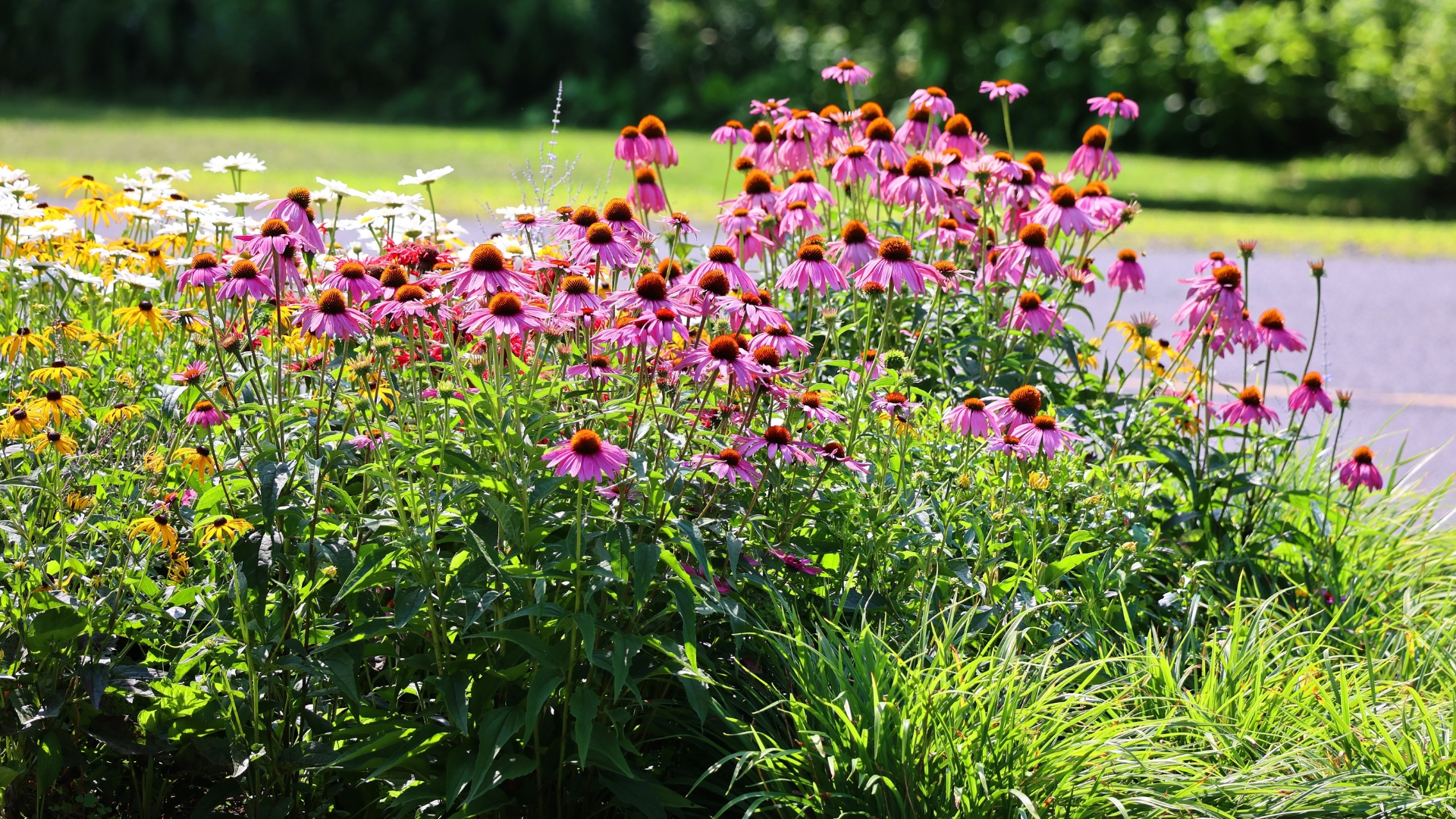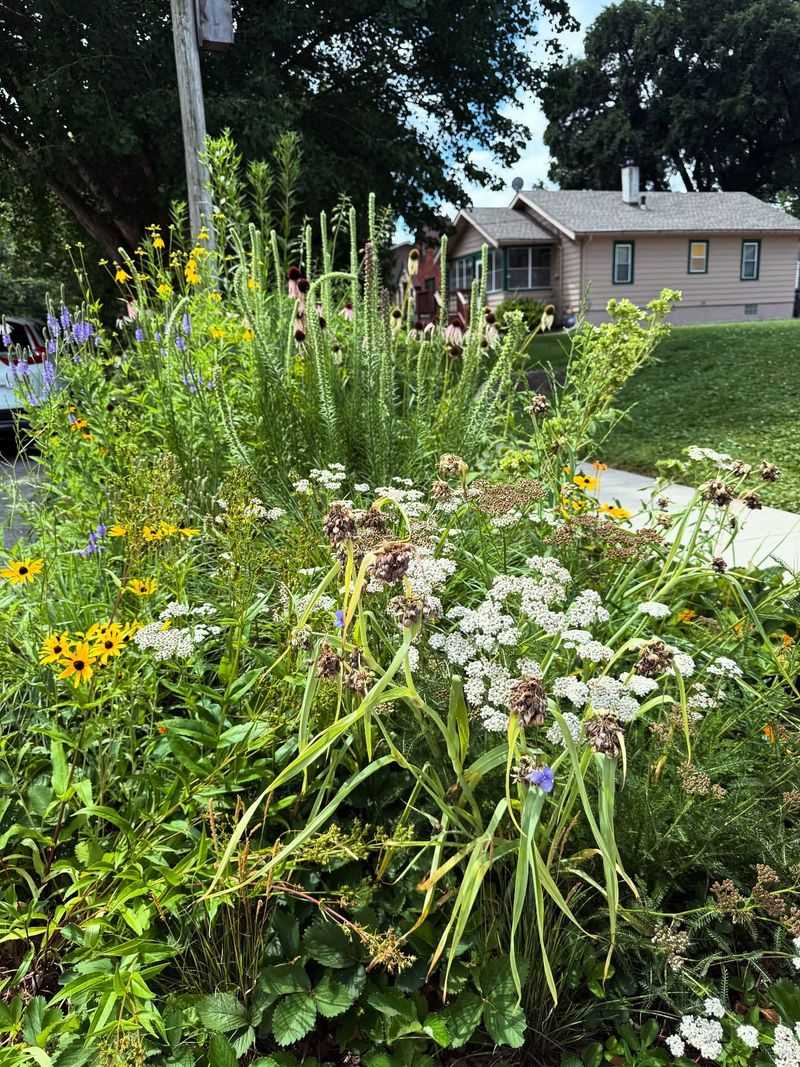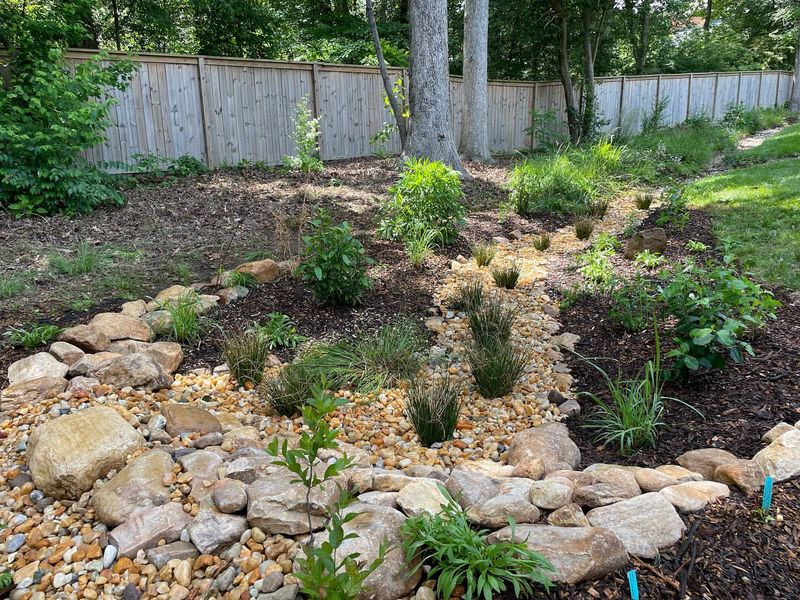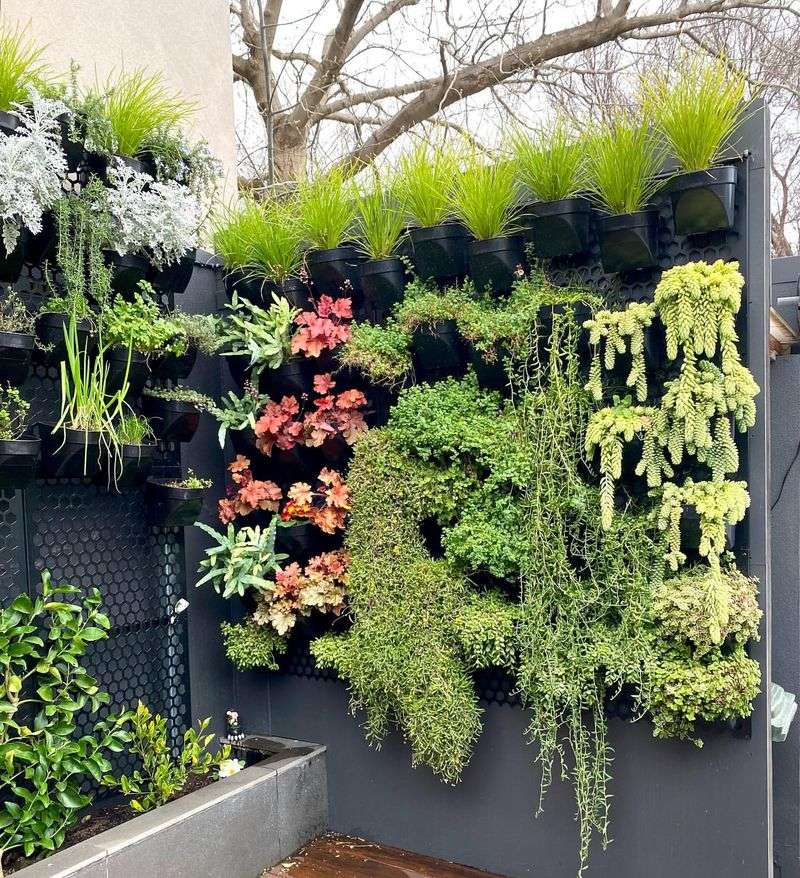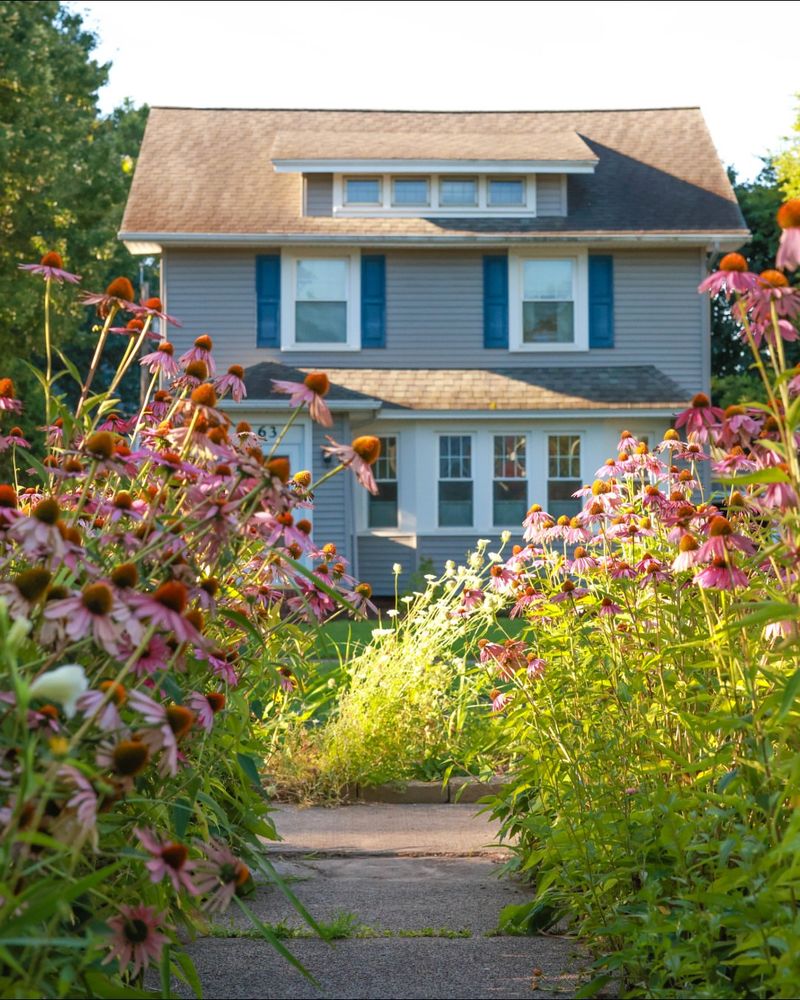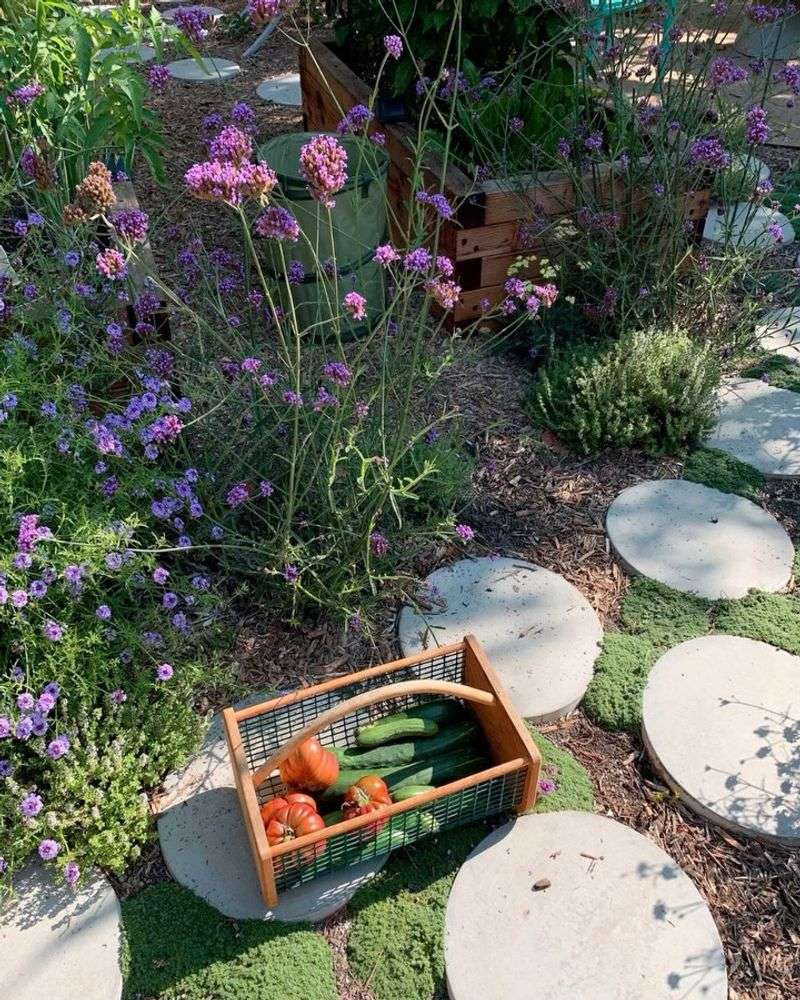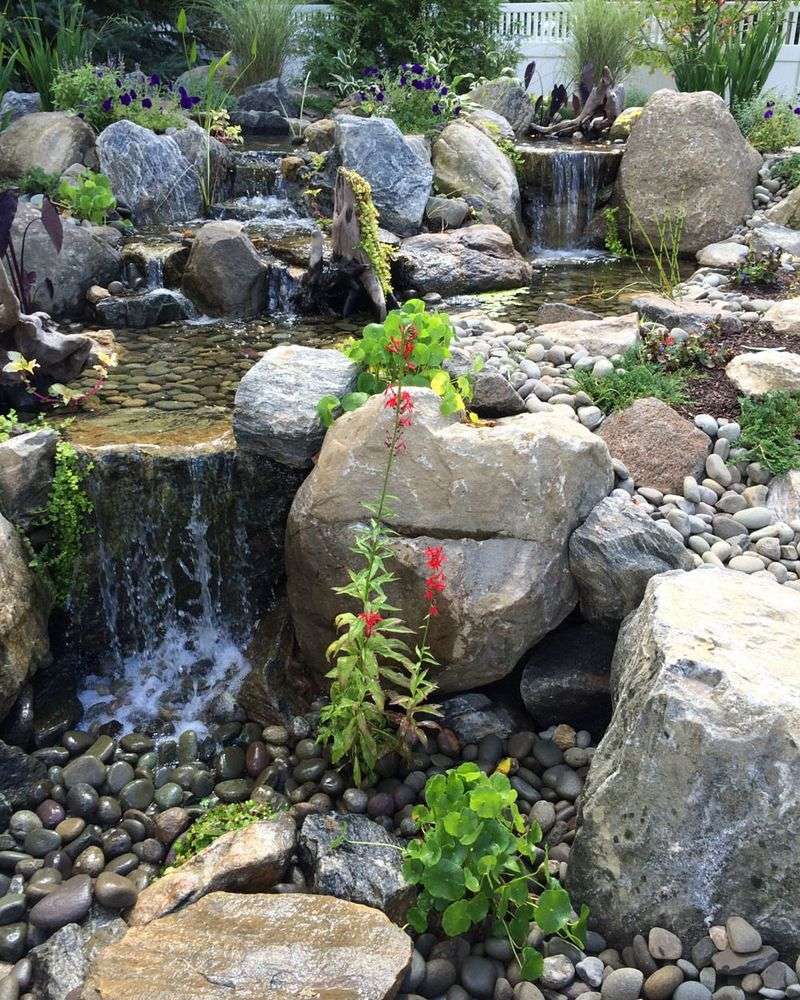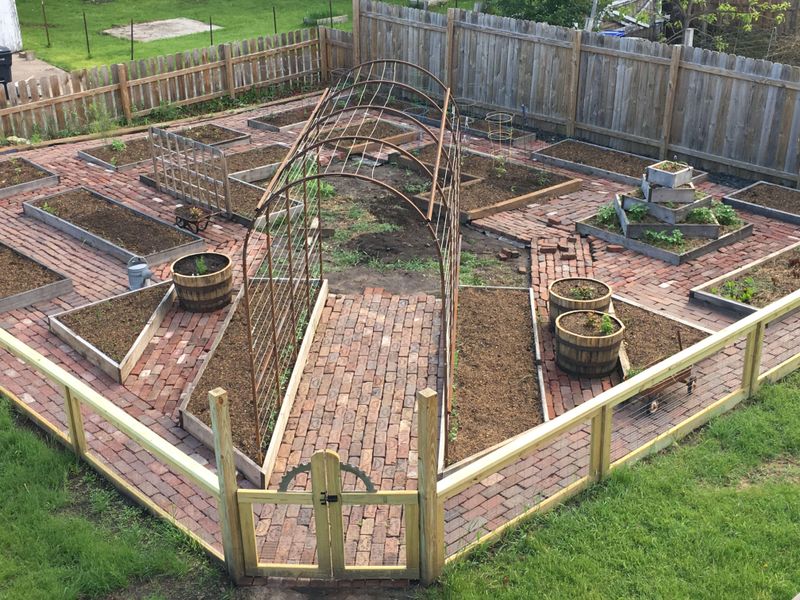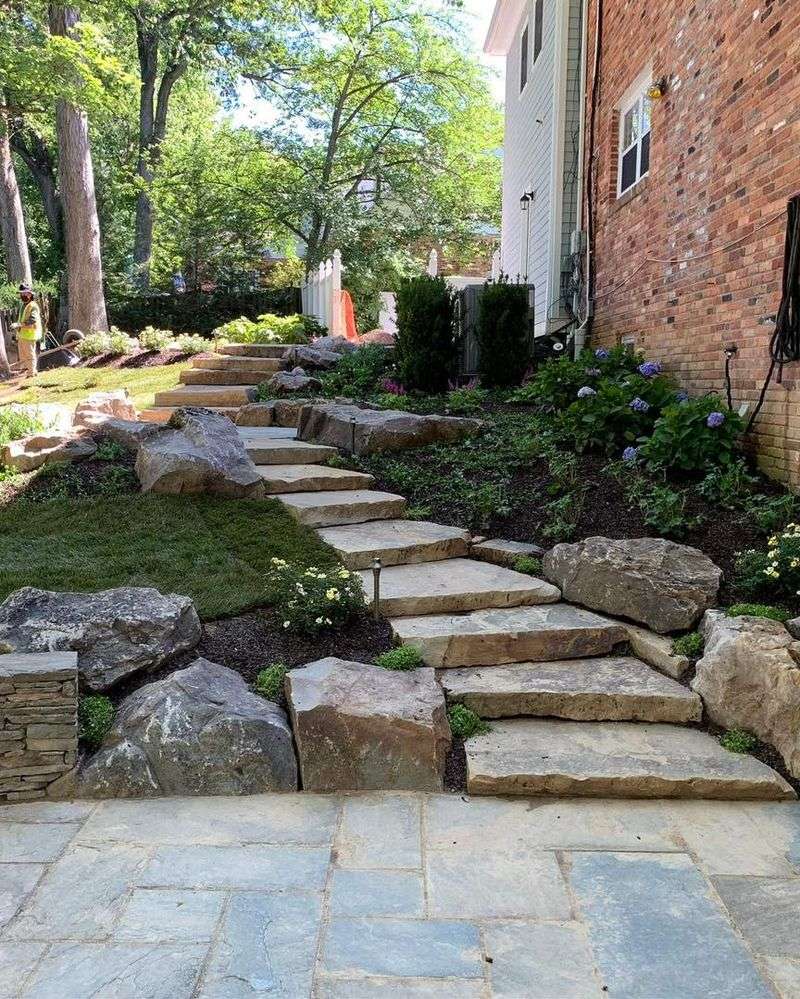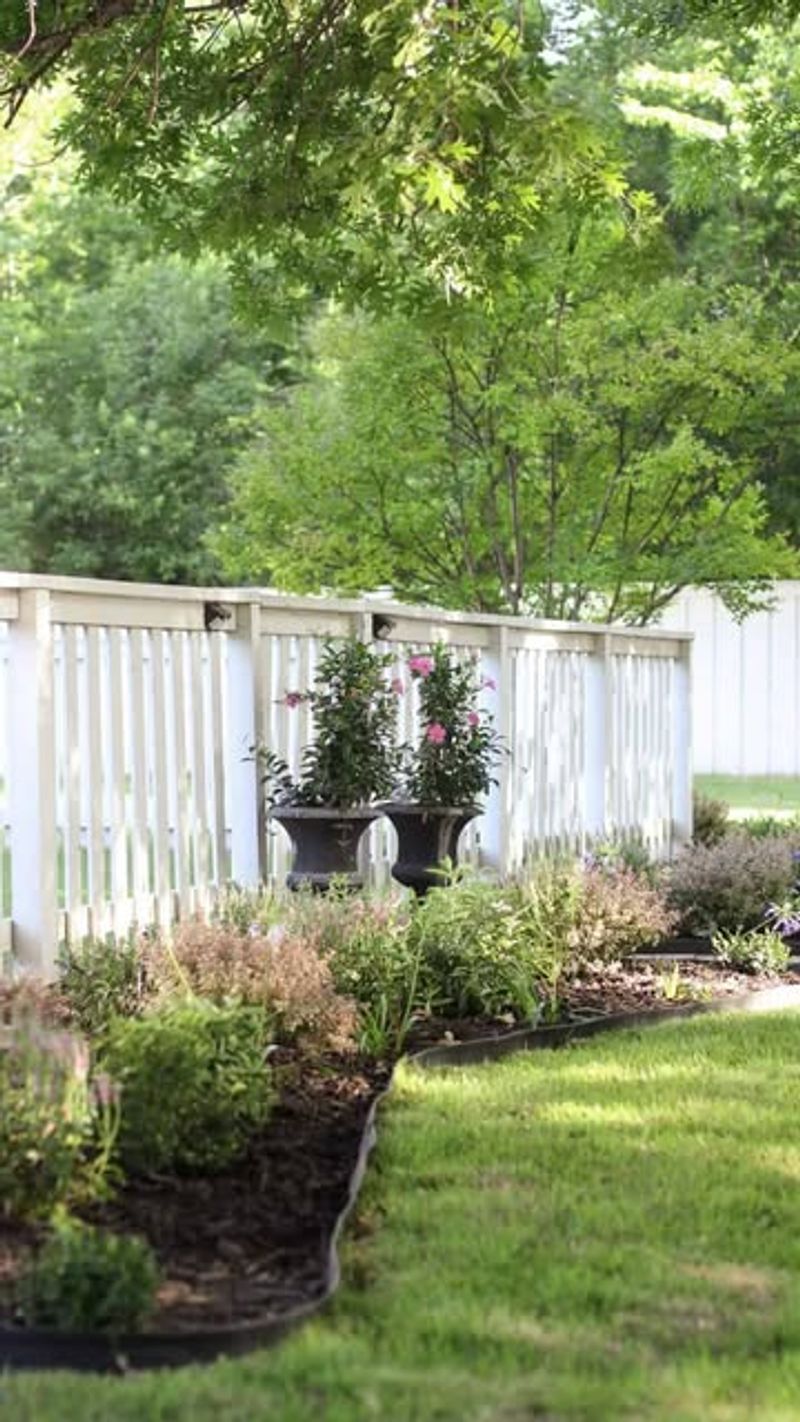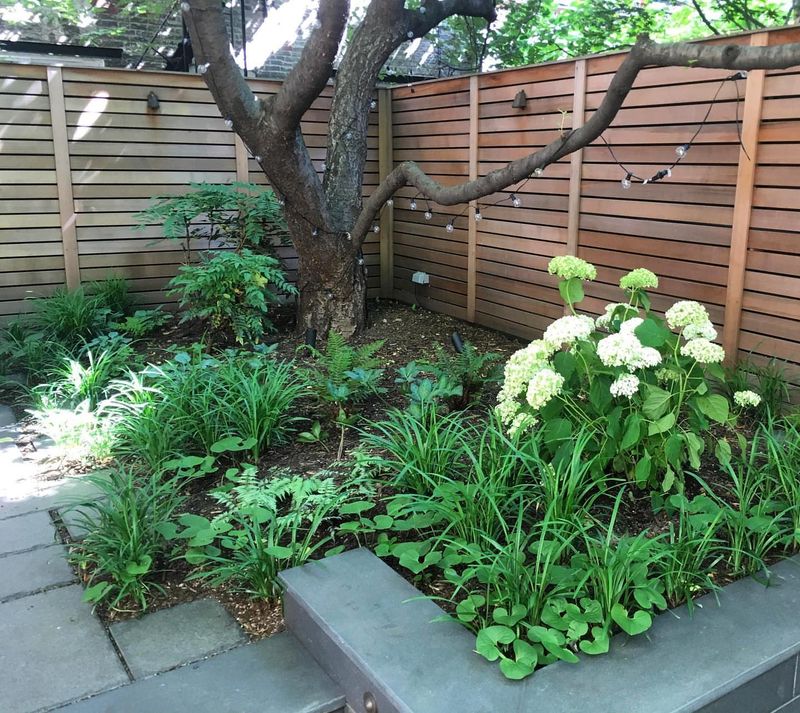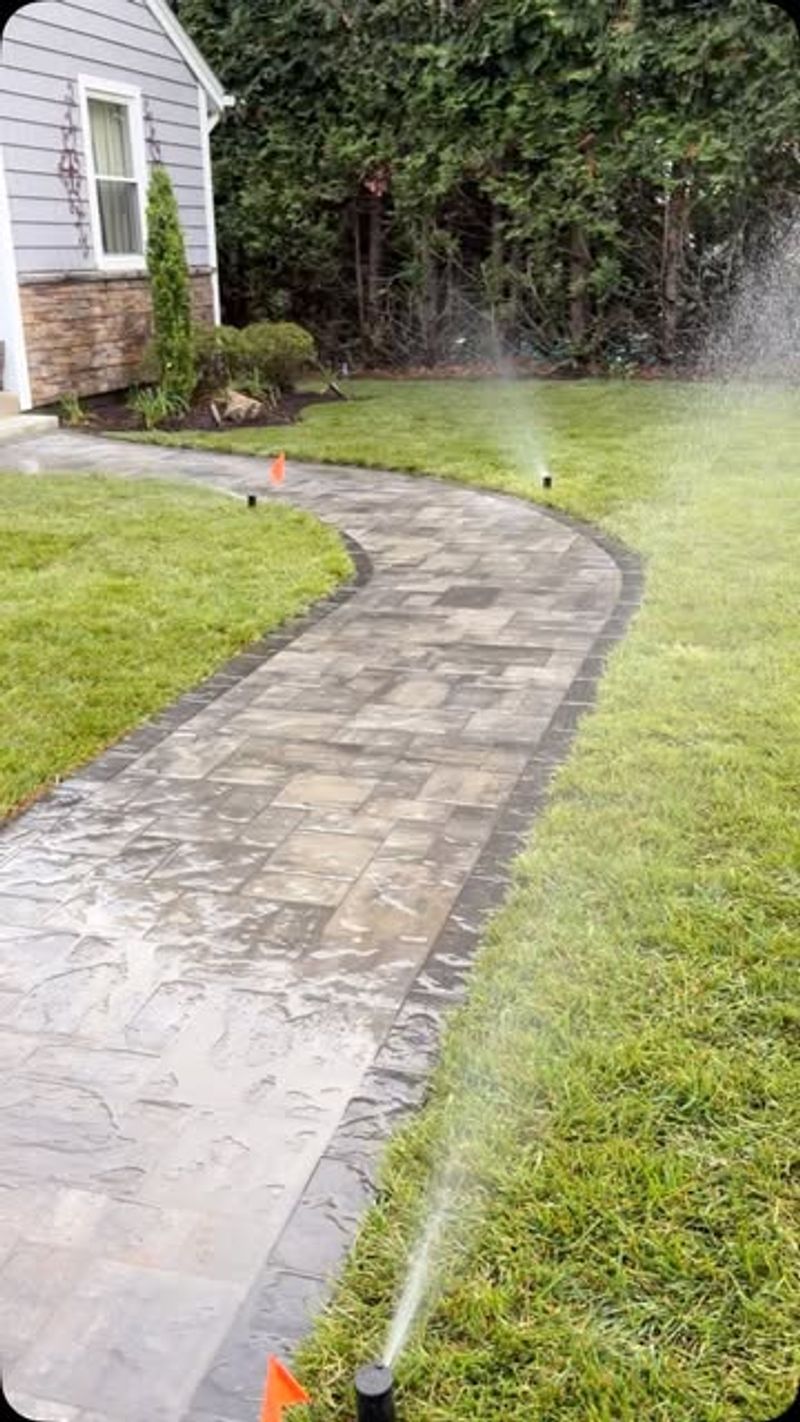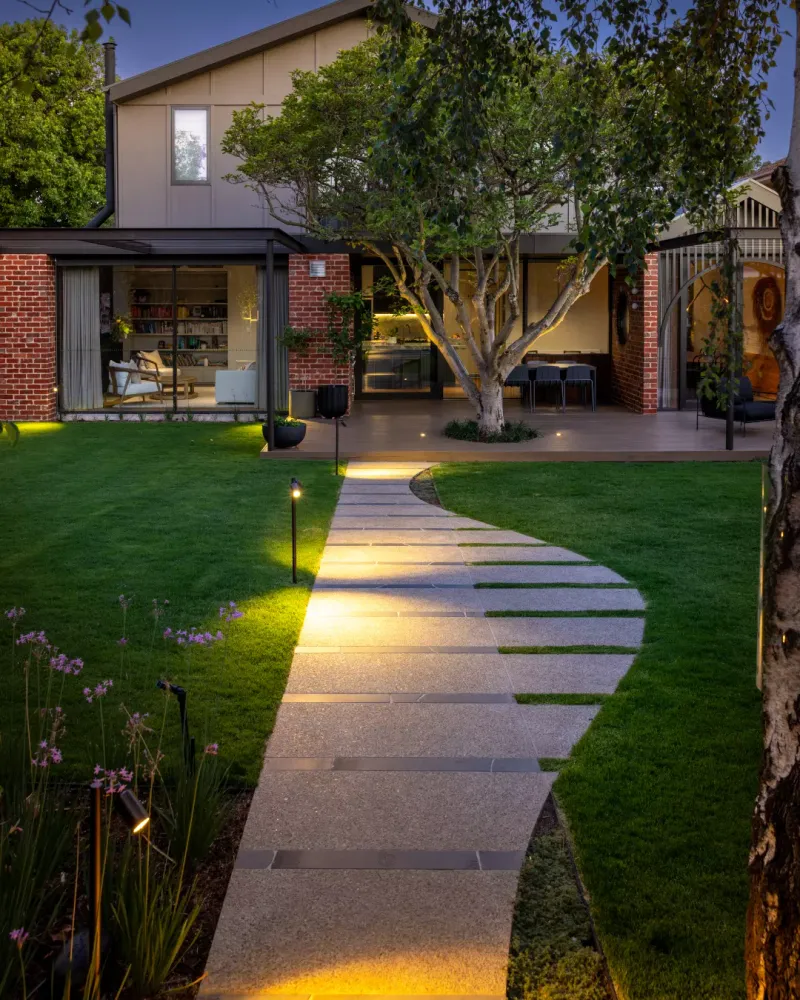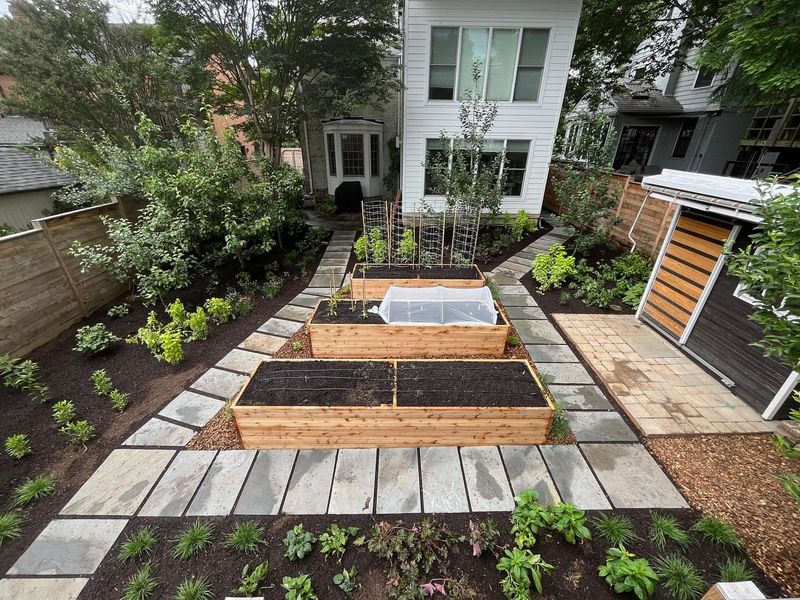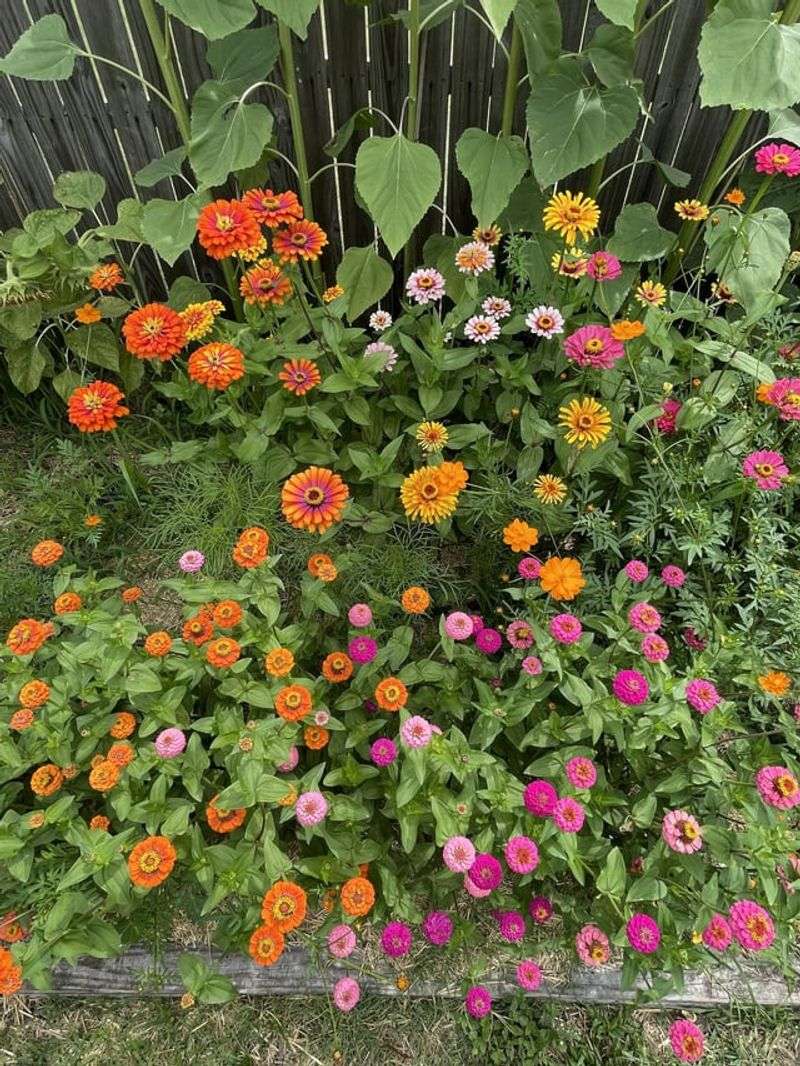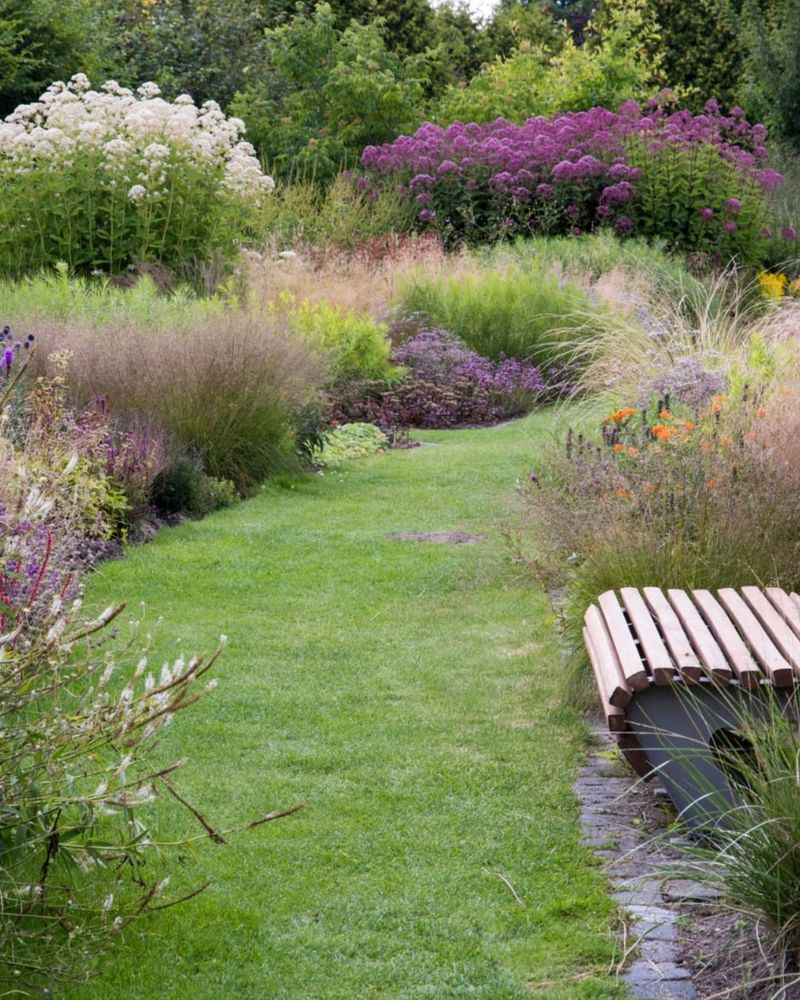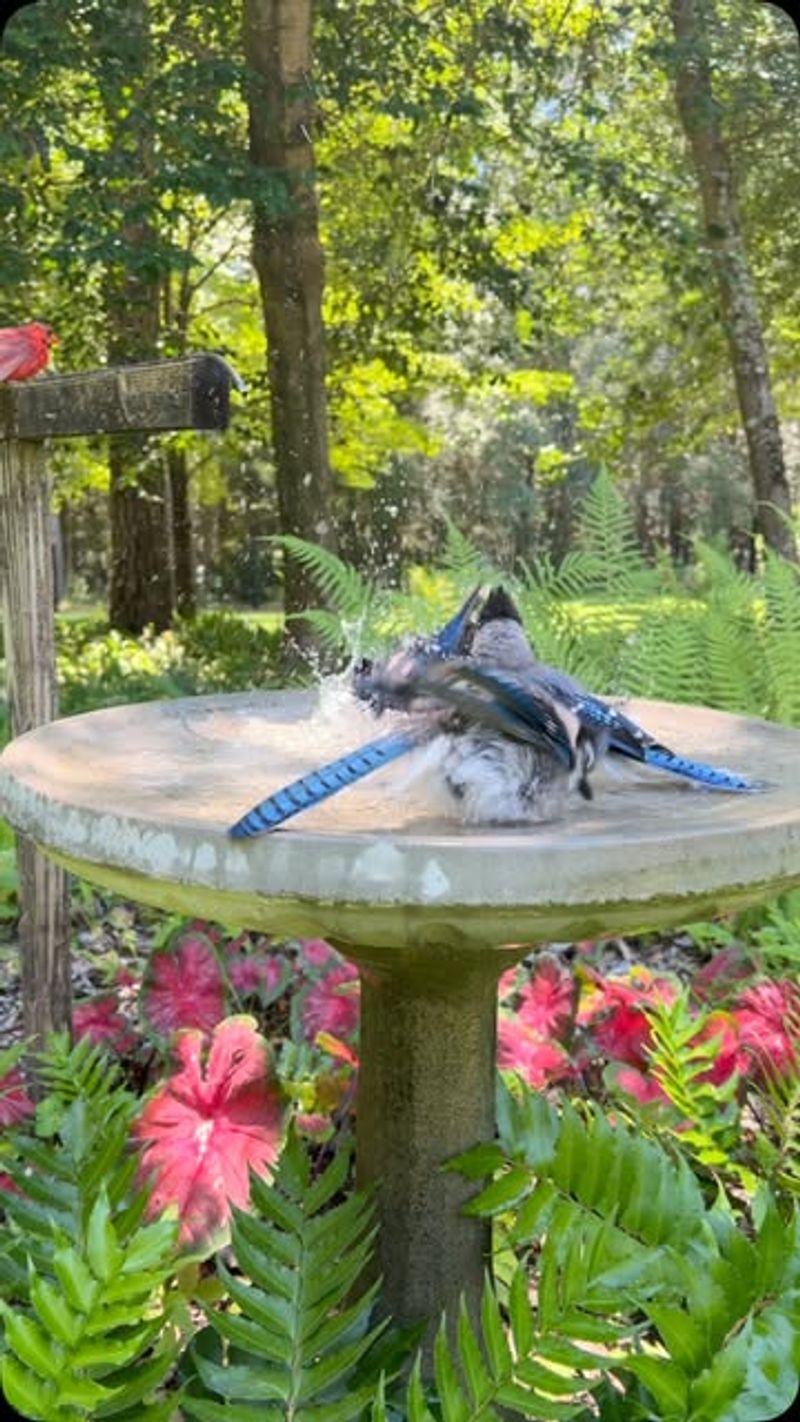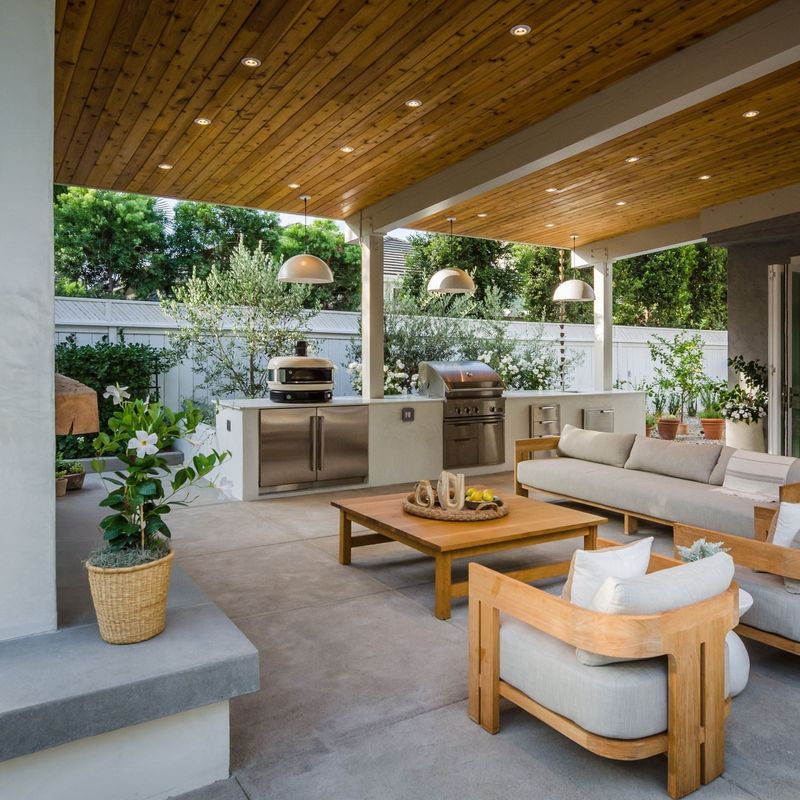Illinois yards can feel a little sleepy after winter, but with the right landscaping ideas, you can bring them back to life in no time.
I’ve tried a few fresh tricks myself, and there’s nothing like seeing your outdoor space burst with color and energy again.
Whether it’s adding texture, playing with shapes, or choosing the perfect plants, small changes can make a big impact. Your Illinois yard is ready for a makeover that will have neighbors stopping by for tips.
Let’s roll up our sleeves and get that garden glowing this spring!
1. Native Prairie Garden
Prairie plants thrive in Illinois’ climate without much fuss. Black-eyed Susans, coneflowers, and big bluestem grass create a gorgeous low-maintenance display that attracts local wildlife.
Many Illinois homeowners are rediscovering these native beauties that evolved to handle both summer heat and winter cold. They’ll save you water and time while providing year-round interest.
2. Rain Garden Installation
Capture excess rainwater with a strategically placed depression filled with water-loving plants. Illinois storms can dump a lot of water, and rain gardens prevent erosion while creating a beautiful landscape feature.
Choose moisture-loving natives like blue flag iris, swamp milkweed, and cardinal flower. Many Illinois counties even offer incentives for installing these eco-friendly gardens that help clean water naturally.
3. Vertical Garden Walls
Maximize limited space by growing upward! Attach planter boxes to fences or walls for an eye-catching living display. Succulents, herbs, and trailing flowers work wonderfully in these systems.
Illinois gardeners find vertical gardens especially useful for urban lots or small yards. They provide privacy, reduce noise, and add a splash of green without taking up precious ground space.
4. Pollinator Pathway
Create a corridor of nectar-rich plants to support bees, butterflies, and hummingbirds. Plant milkweed, bee balm, and asters in clusters to provide food sources throughout the growing season.
Illinois’ monarch butterfly population depends on these pathways during migration. Your neighbors might even join in, extending the pathway throughout your community for maximum environmental impact.
5. Edible Landscaping
Blend beauty and function by incorporating fruit trees, berry bushes, and herbs into your ornamental beds. Apple trees, blueberry bushes, and strawberry plants offer both visual appeal and delicious harvests.
The rich soil in many parts of Illinois is perfect for growing edibles. Interplanting vegetables with flowers creates interest while maximizing your yard’s productivity.
6. Water Feature Focal Point
The sound of flowing water transforms any Illinois yard into a relaxing retreat. Small ponds, fountains, or pondless waterfalls create ambiance while attracting birds and beneficial insects.
During hot Illinois summers, water features help cool the surrounding area. Choose native aquatic plants like water lilies or cattails to enhance the natural feel and require less maintenance.
7. Four-Season Interest Beds
Design planting beds that shine year-round with carefully selected trees, shrubs, and perennials. Spring bulbs, summer bloomers, fall color, and winter structure ensure your yard never looks dull.
Illinois’ distinct seasons showcase different plants throughout the year. Incorporate evergreens, ornamental grasses, and plants with interesting bark or berries for winter interest when snow blankets the ground.
8. Hardscape Renewal
Refresh worn paths and patios with permeable pavers or decorative gravel. These materials allow water to filter through rather than run off, addressing drainage issues common in Illinois clay soils.
Adding curved pathways or expanding patio areas creates usable outdoor living space. Many Illinois homeowners are incorporating outdoor kitchens or fire pits to extend their enjoyment of the yard throughout the year.
9. Living Fence Border
Create privacy with a mixed hedge of flowering shrubs instead of traditional fencing. Lilacs, viburnums, and serviceberry provide screening along with seasonal blooms and berries.
Living fences thrive in Illinois’ climate and offer habitat for birds and small wildlife. Varying the height and bloom time of your shrub selections adds visual interest while maintaining the natural border effect.
10. Shade Garden Oasis
Transform those tricky spots under trees into lush woodland gardens. Hostas, ferns, and native wildflowers like Virginia bluebells thrive in the dappled light of Illinois’ mature trees.
Adding a small bench or garden art creates a secluded retreat. Illinois gardeners appreciate these cool spots during hot summer months when shade gardens provide a refreshing escape from the heat.
11. Smart Irrigation System
Upgrade to water-efficient irrigation with programmable timers and rain sensors. These systems adjust watering schedules based on actual weather conditions, saving both water and money.
Illinois’ unpredictable rainfall patterns make smart systems particularly valuable. Drip irrigation delivers water directly to plant roots, reducing waste and preventing the fungal issues that can plague Illinois gardens during humid summers.
12. Outdoor Lighting Design
Extend your enjoyment of the yard into evening hours with strategic lighting. Solar path lights, uplighting on trees, and string lights create ambiance while highlighting landscape features.
Illinois’ long summer evenings are perfect for outdoor entertaining. Low-voltage LED systems are energy-efficient and can be installed to accent your favorite garden elements or provide security around the property.
13. Elevated Planter Beds
Raised beds offer better drainage and soil control in Illinois’ heavy clay soils. Build them from cedar, stone, or composite materials and fill with quality soil for optimal plant growth.
Many Illinois gardeners find raised beds extend their growing season. The soil warms faster in spring and stays workable later into fall, while the elevated height makes maintenance easier on your back.
14. Butterfly Garden Sanctuary
Dedicate a sunny spot to plants that support butterflies throughout their lifecycle. Milkweed provides food for monarch caterpillars, while nectar plants like liatris and Joe Pye weed feed adult butterflies.
Illinois lies along major migration routes for monarchs and other species. Adding a shallow dish with pebbles and water creates a butterfly puddling spot where they can drink and absorb minerals.
15. Lawn Reduction Strategy
Convert portions of high-maintenance turf into eco-friendly alternatives. Ground covers, prairie gardens, or ornamental grasses require less water and mowing than traditional lawns.
Many Illinois homeowners are embracing this trend to reduce their environmental footprint. Strategic lawn areas can remain for play spaces while allowing the rest of your yard to support more diverse plant life.
16. Bird-Friendly Habitat
Attract Illinois’ colorful songbirds with berry-producing shrubs, seed-bearing perennials, and water features. Serviceberry, coneflowers, and sunflowers provide natural food sources throughout the seasons.
Illinois hosts both resident birds and seasonal migrants. Adding nesting boxes, bird baths, and dense shrubs creates a complete habitat that will bring bird songs and activity to your yard year-round.
17. Outdoor Living Room
Create a defined outdoor space for relaxing and entertaining. Comfortable furniture, weather-resistant rugs, and container plantings transform a basic patio into an extension of your home.
Illinois residents cherish outdoor living during the pleasant spring and fall months. Adding a pergola or shade sail provides protection from intense summer sun, while a fire pit extends the usefulness into cooler evenings.

